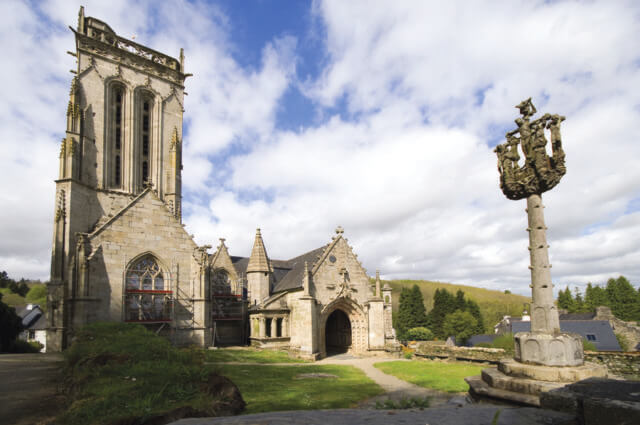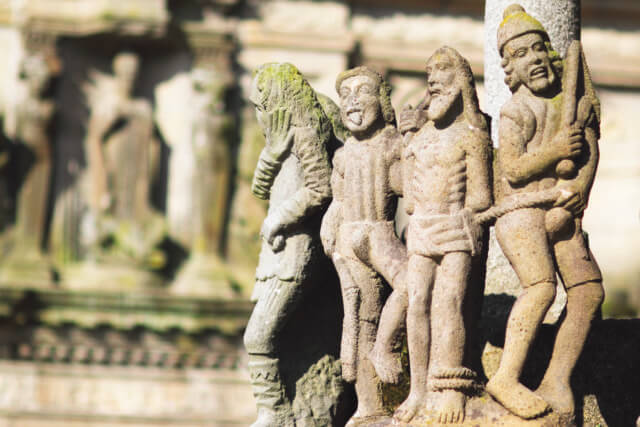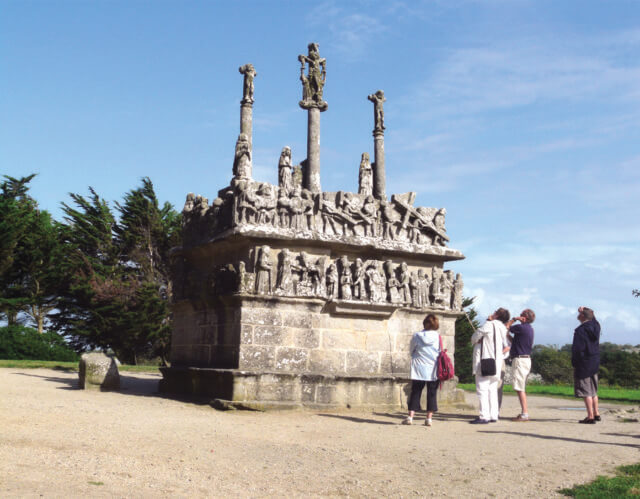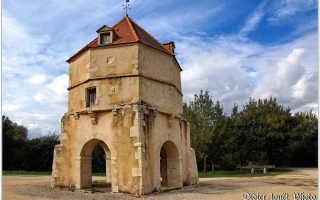Brittany’s Catholic Heritage: Top Religious Sites
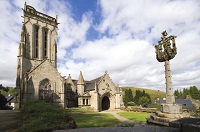

Brittany possesses a wealth of religious heritage, including over 300 saints. The region’s Christian identity dates back to the 4th century, when seven founder saints brought Catholicism to its people…
1. Pilgrimages, pardons & saints
Following the devastation of the Norman Invasion, from the 9th century onwards, Brittany’s religious revival saw the flowering of Roman Catholic abbeys and churches. From the 12th to the 15th centuries, the patronage of the dynasty of the Dukes of Monfort and other members of the high nobility favoured the rebuilding of most cathedrals. In addition, between the 14th and the 18th centuries, many rural chapels and churches were constructed. This religious heritage is an expression of the faith of the Breton people.
2. Parish Enclosures
Generally located around a cemetery and accessible through a ‘triumphal gate’, each Parish Enclosure incorporated the church, charnel-house and Calvary (a granite monument depicting the Passion),
and provided parishoners with a link between the world of the living and that of the dead. Since the area of each Enclosure and was restricted, in order to save room, the remains of the dead were regularly removed from the tombs that lay within. They were then placed in a charnel-house or ossuary. The main Parish Enclosures are at Guimiliau in Finistère, Lampaul-Guimiliau, Saint-Thégonnec, La Martyre, Commana, Sizun and Pleyben.
3. The Pardon
‘The Pardon’ was the expression of popular devotion to a particular Saint, from whom grace or a pardon was requested. Annual fêtes, celebrating the local saints, saw the gathering together of the faithful from one or more parishes.
Each occasion features a solemn mass followed by a procession that sees banners, relics, statues and crosses carried by a cortège singing canticles. After the parade, there’s a secular fête, involving dancing, music and traditional games.
The ceremony of the Pardons of the Sea – such as the Pardon Ceremony of Saint-Jacques at Locquirec in Finistère, or Morbihan’s Benediction of the Courreaux at Groix – is unusual, as once the procession arrives at the port, the clergy, children and reliquaries board a boat and then the Priest blesses all of the vessels in the harbour.
4. The Tro Breiz
Breton pilgrims should visit the tombs of the region’s seven founder saints and seven bishoprics. The ‘Tro Breiz’ route is more than 500km long and was travelled on foot over the course of 30 days. Each cathedral displays its relics and receives contributions from the pilgrims. During the 16th century, over 30,000 pilgrims made the Tro Breiz each year.
5. The Saints
As can be seen by the large number of sacred fountains, pilgrimages, votive offerings and chapels, saints once played an important part in Breton daily life. Whether offi cially acknowledged by the clergy or unofficially by village communities, cults such as that of Sainte- Anne, the ‘patron saint of Brittany’ have played a real part in Breton consciousness.
Many Breton patrons offer protection, such as Saint Fiacre (gardeners), Saint Jacques (sailors) and Sainte Barbe (fire fighters), while various healing and veterinary patrons protect man and animals against illness.
For more information please visit www.brittanytourism.com
Share to: Facebook Twitter LinkedIn Email
More in boat, brittany, children, courses, events, people
By FrenchEntrée
Leave a reply
Your email address will not be published. Required fields are marked *

